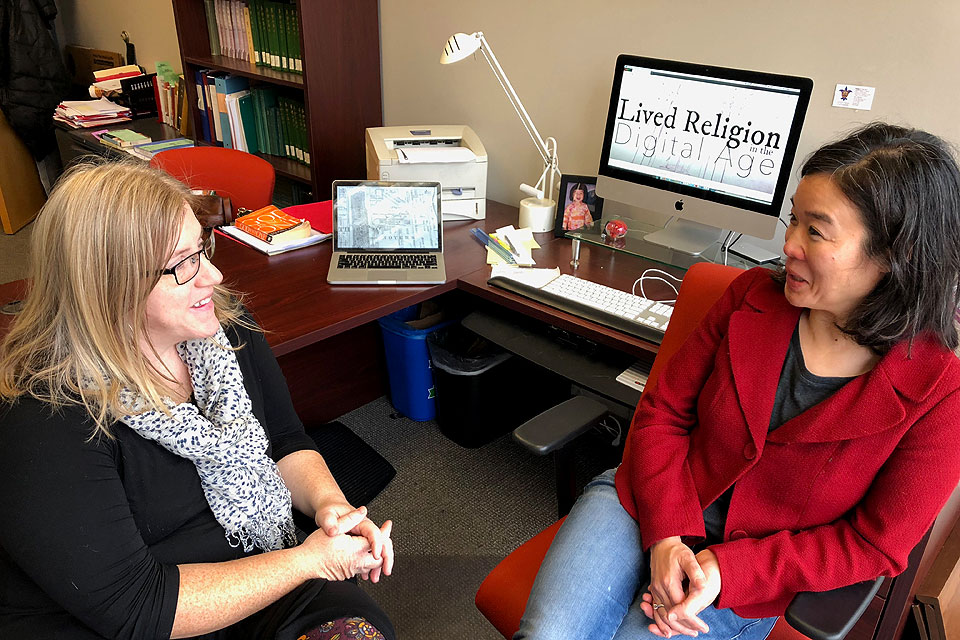STLMade Showcases the Spirit in SLU's Lived Religion in the Digital Age Project
Maggie Rotermund
Senior Media Relations Specialist
maggie.rotermund@slu.edu
314-977-8018
Reserved for members of the media.
What does religion look like? How do we see religion in the every day places in the city where we live? These are a few of the questions being explored by the Lived Religion in the Digital Age project.
The Lived Religion project is co-directed by Rachel Lindsey, Ph.D., assistant professor, and Pauline Lee, Ph.D., associate professor, both in Saint Louis University’s Department of Theological Studies. Their work was recently highlighted by the STLMade movement, which tells stories about the people and places that lend vibrancy and character to St. Louis.
With a $400,000 grant from the Henry Luce Foundation, Lindsey and Lee are exploring where people experience religion in the St. Louis region and are in the process of creating a digital map and database to show what they’ve found. While the map will include churches, mosques, temples and other houses of worship, it will also feature places and public art that isn't usually considered within a religious perspective.
‘What is lived religion?’ is a question that we pose,” Lindsey told STLMade. “We are thinking about religion through the five senses – how is religion seen, but also tasted, heard, smelled and felt by different populations in different places in different times.”
She added that SLU's Jesuit mission gives them the flexibility and the freedom to really sink their teeth into these big questions about religion and public life.
The project begins by asking people to think outside the box and relinquish specific definitions of religion to delve into details of lived experience. The findings will be available to the public on a new web site created by SLU’s Walter Ong, S.J., Center for Digital Humanities.
Teams of student researchers will participate in mapping and interviewing subjects. The researchers want to know about objects, spaces, practices, food, music, and personal history, among other potential topics. These questions will yield a description of each place, and help paint a picture of its connection to a faith tradition, the city itself, and, ultimately, what religion means in St. Louis and to St. Louis.
The three-year public theology and digital humanities project is one of a handful funded in 2018 by the Luce Foundation’s Theology Program.
#archcityreligion: Photographs from Religion in the Midwest
The Lived Religion in the Digital Age project's photography exhibit, #archcityreligion: Photographs from Religion in the Midwest by Lauren Pond, can found in the first floor lobby of Adorjan Hall.
Lauren Pond was invited to SLU as the Lived Religion in the Digital Age Artist in
Residence. Lauren is a professional photographer based in Columbus, Ohio, whose Religion in the Midwest portfolio covers boundaries of sacred space to explore religion as a powerful component
of modern life. During her residency, undergraduates in SLU theology classes met with Pond
before beginning their studies of religion in St. Louis and beyond. Alongside a selection
of Pond’s works, this exhibit features several photographs by SLU students.
The opening reception for this exhibit will take place from 3-5 p.m. Wednesday, May 1, in the first floor lobby of Adorjan Hall.
STLMade
The STLMade movement launched on March 14. The platform carries original features that show what’s working well, what St. Louis has to offer and how those in the region are affecting change to make St. Louis a better place for all. STLMade gives voice to the renaissance underway in St. Louis, a renaissance that SLU is part of.
Read the STLMade story on SLU's Lived Religion in the Digital Age project.


















